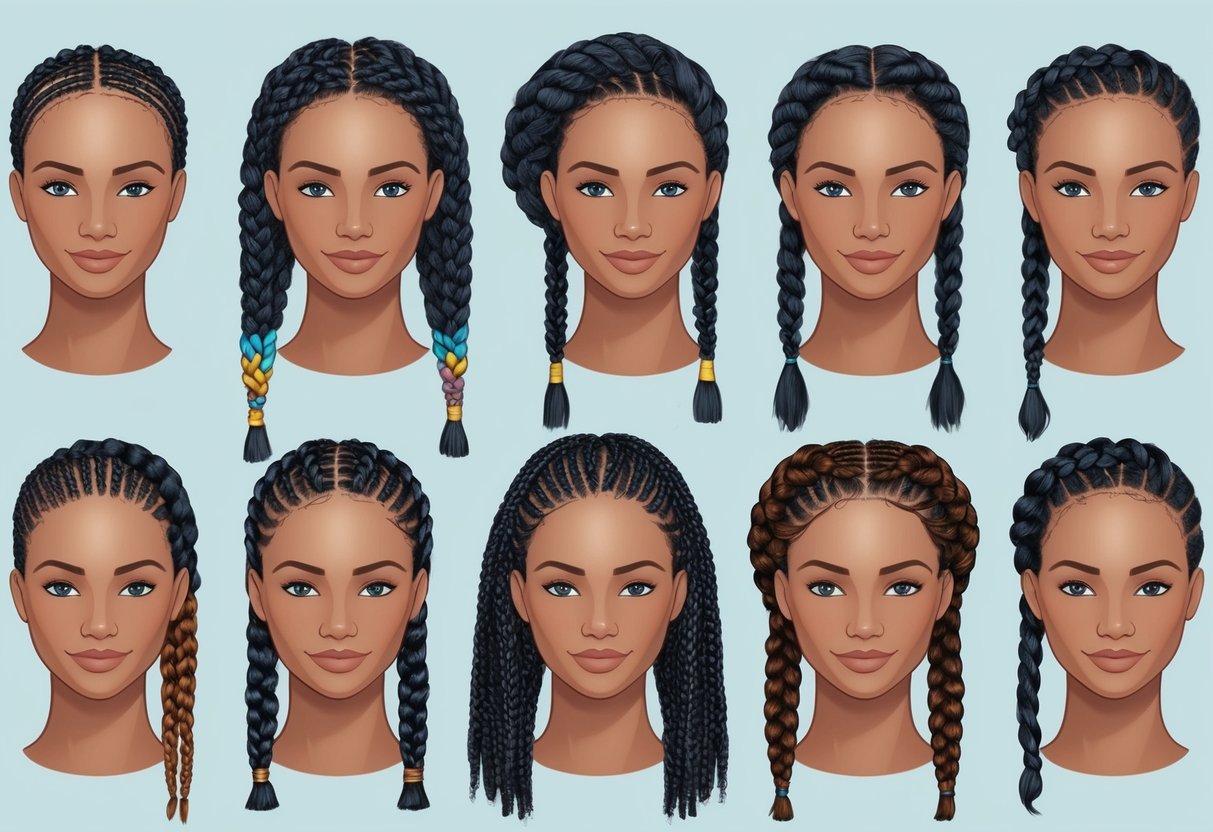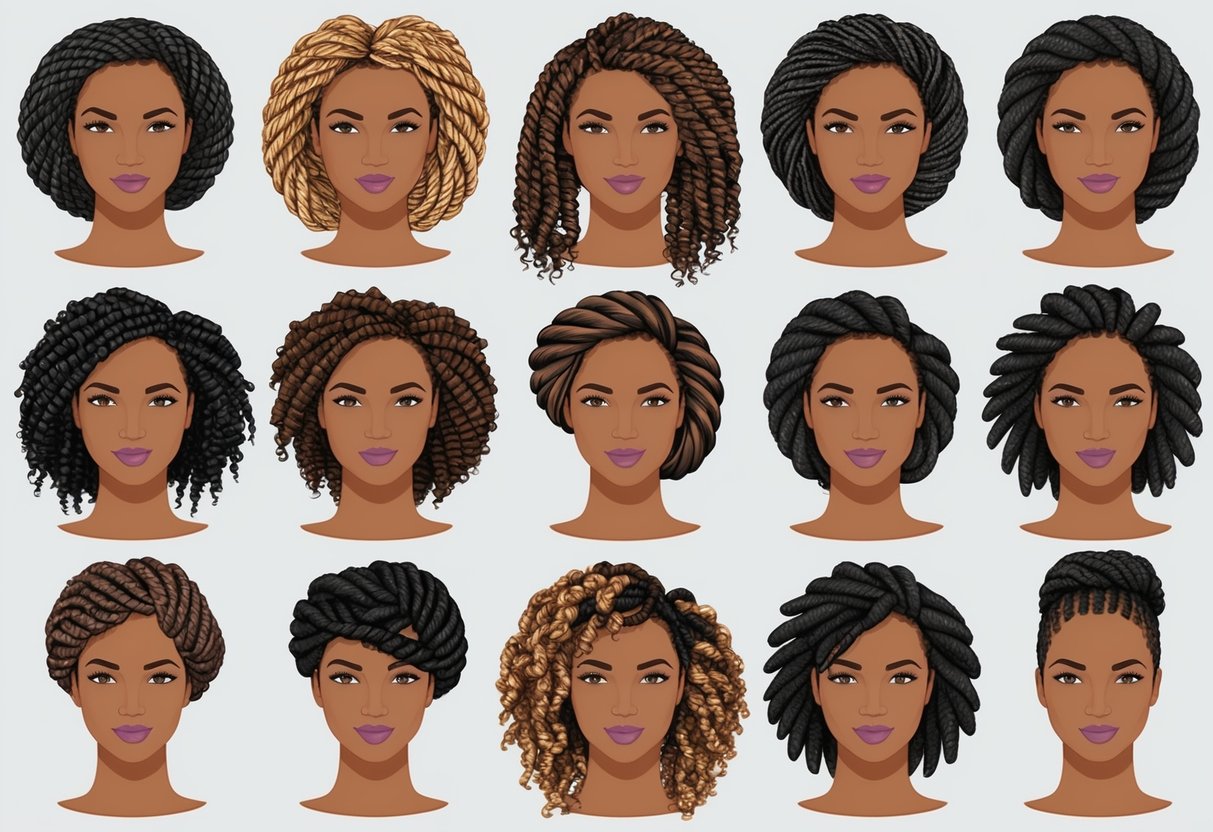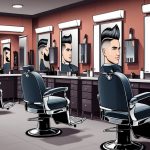
Creative Updos and Braided Buns
Elegant updos and braided buns offer versatile ways to protect hair while maintaining a polished look. These styles help reduce daily manipulation and minimize breakage.
They work for a variety of hair textures.
Buns and Halo Braids
Buns are a staple in protective hairstyling because they keep ends tucked away and require little maintenance. Styles like low, high, and sleek buns remain popular since they can be styled with or without added hair for volume.
A secure bun can last several days with proper care. This makes it ideal for busy schedules.
The halo braid wraps around the head like a soft crown. This technique involves creating one or two long braids that are then gently pinned to encircle the head.
Halo braids keep the hair snug and controlled, which helps shield strands from friction and environmental exposure. For detailed inspiration and step-by-step imagery, visit this guide to updo and bun hairstyles.
Both buns and halo braids can be accessorized with pins or scarves for extra flair. Key tips for longevity include moisturizing the scalp before styling and avoiding excessive tension when securing the style.
Crown Braid and French Braid
The crown braid is a classic updo where a braid encircles the entire hairline, giving a regal and finished appearance. It works well with various hair textures, from straight to coily.
It can be left neat or slightly undone for a softer effect. This style is favored for its durability and ability to keep hair firmly away from the face and neck.
A French braid begins at the top of the scalp and gradually incorporates more hair as it is braided toward the nape. It can be styled as a single braid or in multiples.
The French braid’s flat profile makes it a comfortable choice for wearing under hats or scarves. Both styles serve as effective protective braids and can last several days with nighttime wrapping.
For more creative options and step-by-step tutorials, see this collection of cool, easy braids that work for all hair types.
Versatile Twists: From Rope Twists to Twist Outs

Twists and braids offer unique styling possibilities while helping to protect hair from daily wear. Techniques like rope twists, twist outs, and Dutch braids are favored for their durability and versatility.
They suit many hair textures.
Rope Twists and Twist Outs
Rope twists are formed by dividing hair into two sections and twisting them individually before wrapping them together to create a rope-like effect. This style is suitable for both natural and relaxed hair and provides a sleek, uniform look.
Rope twists are known for their ability to keep ends tucked, which reduces tangling and breakage. To get a defined twist out, rope twists or two-strand twists are unraveled after setting, leaving hair in loose, springy curls.
The twist out method is popular for those seeking volume and bouncy definition without heat styling. Maintenance is simple—wear a silk bonnet overnight and moisturize regularly to keep the texture fresh.
For a step-by-step approach, check out this rope twists styling tutorial.
Key benefits of rope twists and twist outs:
- Low-tension styling, which reduces scalp stress.
- Flexibility for updos or ponytails.
- Excellent for retaining moisture.
Small Braids and Dutch Braids
Small braids, sometimes called micro braids, use thin sections of hair to create a lightweight and intricate protective look. They are long-lasting when well maintained and minimize manipulation for weeks at a time.
Dutch braids, also known as inverted or inside-out braids, are created by crossing hair sections under one another, unlike the standard overhand technique. This creates braids that stand out with a raised, three-dimensional effect.
Dutch braids can be styled in single or double forms. They work well for gym-goers, students, and those looking for stylish, secure options.
Here’s a comparison:
| Style | Look | Lasts (with care) | Hair Types |
|---|---|---|---|
| Small Braids | Thin, flexible | 4–8 weeks | All hair |
| Dutch Braids | Raised, bold plaits | 1–2 weeks | Medium-thick |
Small braids and Dutch braids both allow for creativity with partings and can be accessorized easily. Regular cleansing of the scalp and use of lightweight oils is recommended to prevent buildup and keep braids looking fresh.
For more inspiration, see this list of low-maintenance twisted and braided hairstyles.
Using Extensions, Wigs, and Weaves for Protective Styles
Selecting the best protective style often depends on the right combination of natural hair care and supplementary hair. Extensions, wigs, weaves, and clip-ins each provide unique benefits.
They help reduce breakage and allow hair to thrive.
Choosing the Right Hair Extensions
Hair extensions can be used to add length, volume, or create intricate styles such as box braids, goddess braids, or crochet braids. Quality matters: synthetic hair offers affordability, while human hair delivers a more natural look and lasts longer with proper maintenance.
When choosing extensions, users should consider texture match, installation technique, and lifestyle needs. Some people prefer the flexibility of installing loose braids with extensions, while others opt for crocheted hair over cornrows to save time.
Proper installation and minimal tension protect natural roots from stress and prevent breakage. Washing and moisturizing extensions regularly helps prevent buildup, preserving both the health of the natural hair and the extensions themselves.
Learn about professional recommendations for installing faux locs and braids with extensions for added protection.



